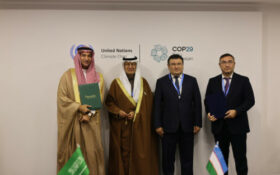A multi-national project pairing a vanadium redox flow battery with a supercapacitor has been launched to mitigate the fluctuations in renewable energy sources.
The HyFlow hybrid energy storage system will harness VRFB’s high specific energy with supercapacitors short cycling ability and high power density to harness wind and solar power to deliver stability for private and public energy grids.
A HyFlow spokesman was unable to tell BEST where the system will be located.
The European research project includes eleven partners from Germany, Italy, Spain, Czechia (formally known as the Czech Republic), Austria, Portugal and Russia. They will work together under the coordination of Landshut University of Applied Sciences in Germany.
The system will balance the power and energy demand flexibly during critical grid conditions, including high load or generation peaks.
A management system will provide a high level of control and adaptability through computer analytics and control algorithms.
Professor Karl-Heinz Pettinger, scientific director of the Landshut University of Applied Sciences Technology Centre for Energy, who coordinates the project, said: “A redox flow battery has a large storage capacity, but can only be charged and discharged slowly.
“The supercapacitor, on the other hand, has short charging times with low energy density. The hybridisation is intended to create an energy storage system that combines the advantages of both systems: high storage capacity and high power.”
The HyFlow project will be funded by the EU until 2023 with €4 million ($4.8 million).
The project started in 2019 as part of a conference of the FSTORE research platform.












